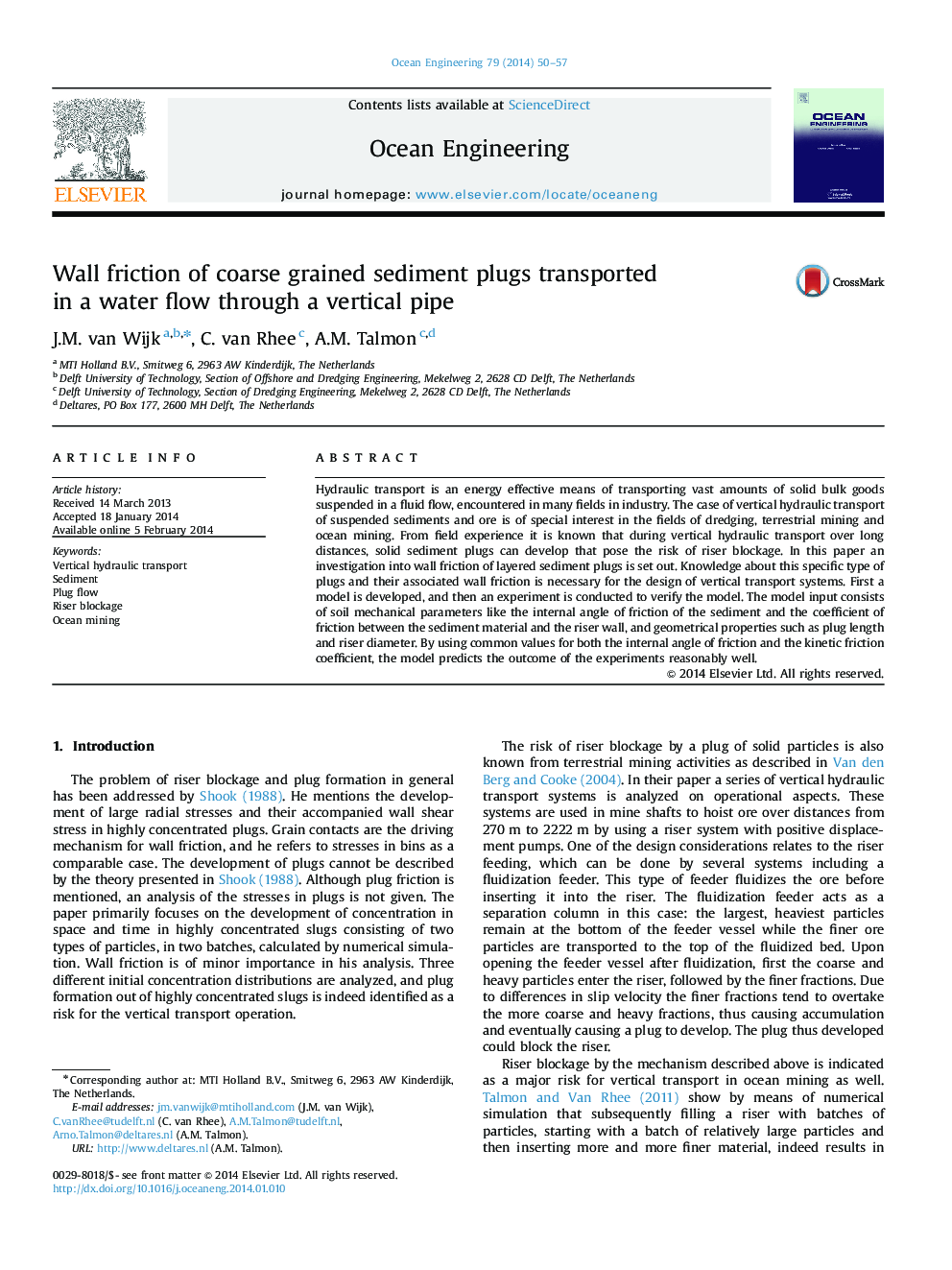| Article ID | Journal | Published Year | Pages | File Type |
|---|---|---|---|---|
| 1725726 | Ocean Engineering | 2014 | 8 Pages |
•Wall friction of layered plugs depends on order of layering.•Wall friction of a layered plug can largely exceed its submerged weight.•A formula using sediment properties to calculate wall friction of plugs is proposed.
Hydraulic transport is an energy effective means of transporting vast amounts of solid bulk goods suspended in a fluid flow, encountered in many fields in industry. The case of vertical hydraulic transport of suspended sediments and ore is of special interest in the fields of dredging, terrestrial mining and ocean mining. From field experience it is known that during vertical hydraulic transport over long distances, solid sediment plugs can develop that pose the risk of riser blockage. In this paper an investigation into wall friction of layered sediment plugs is set out. Knowledge about this specific type of plugs and their associated wall friction is necessary for the design of vertical transport systems. First a model is developed, and then an experiment is conducted to verify the model. The model input consists of soil mechanical parameters like the internal angle of friction of the sediment and the coefficient of friction between the sediment material and the riser wall, and geometrical properties such as plug length and riser diameter. By using common values for both the internal angle of friction and the kinetic friction coefficient, the model predicts the outcome of the experiments reasonably well.
